Art on the Underground celebrates its 25th year
 GG Archard
GG ArchardArt on the Underground "continues to be at the forefront of ideas around art and public space", Transport for London has said, as the programme celebrates its 25th anniversary this year.
Here's a look back at some of the art showcased in and around London's underground stations over the past quarter of a century.
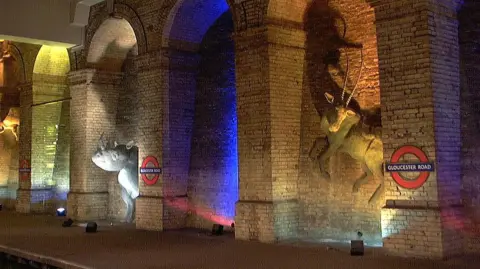 Kendra Haste, 2000. Courtesy of the artist
Kendra Haste, 2000. Courtesy of the artistIn 2000 the first commission from Platform for Art, as it was then known, was Kendra Haste's Underground Safari.
It was displayed on the disused platform next to the Circle and District line in Gloucester Road station.
Gloucester Road station was the venue for Cindy Sherman's Billboard Commission, in collaboration with Serpentine Gallery.
It ran from June to September 2003 and was regarded as an early highlight of the programme.
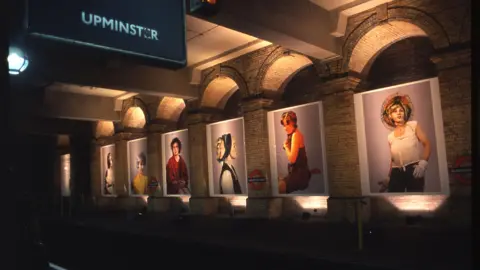 Cindy Sherman, 2003. Courtesy of the artist
Cindy Sherman, 2003. Courtesy of the artistIn 2005, Gloucester Road was once again the venue for Peace and Love by Beatriz Milhazes which occupied an entire side of the station platform.
It created "a visual dialogue with both the architecture and the constant movement of trains and travellers within".
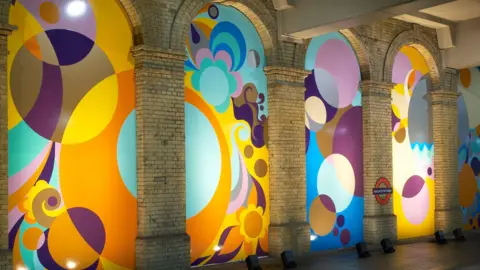 Steven White
Steven WhiteA series commissioned to celebrate 100 years of the Piccadilly line included the first ever work of art to cover an entire Tube train.
The piece was designed by artist Jim Isermann and wrapped the full length of one Piccadilly line train.
The train travelled along the Piccadilly line throughout the summer of 2007.
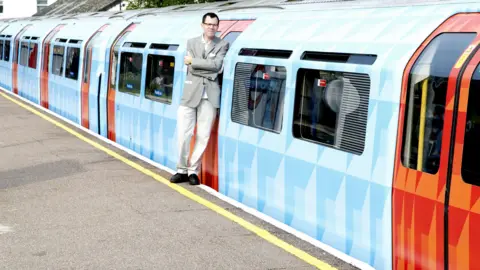 Jim Isermann, ‘Tube Wrap’, 2006. Courtesy of the artist
Jim Isermann, ‘Tube Wrap’, 2006. Courtesy of the artistIn 2008, Platform for Art was renamed Art on the Underground, to acknowledge its spread across the network.
The following year, British artist Jeremy Deller worked with Tube drivers on the Piccadilly line to produce artwork which included a booklet of quotes that drivers used in their daily communications, along with standard operational announcements.
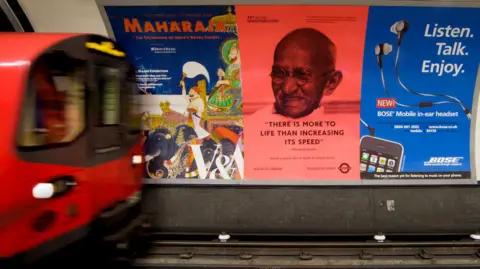 Daisy Hutchinson
Daisy HutchinsonFrom 2010, the Art on the Underground programme started commissioning major permanent works, including Wrapper by artist Jacqui Poncelet.
Described as "a vast work in vitreous enamel that combines pattern and references to the local area", it was completed at Edgware Road in 2012.
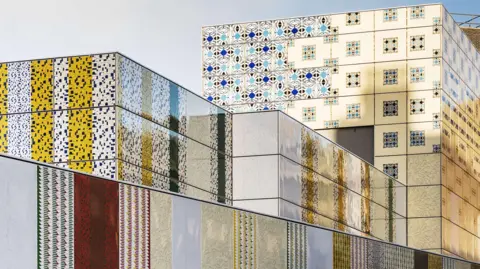 Thierry Bal
Thierry BalTo mark 150 years of the London Underground in 2013, British artist Mark Wallinger made an artwork for every station.
Each labyrinth plaque is a unique, permanent artwork and enthusiasts continue to seek them out across the network.
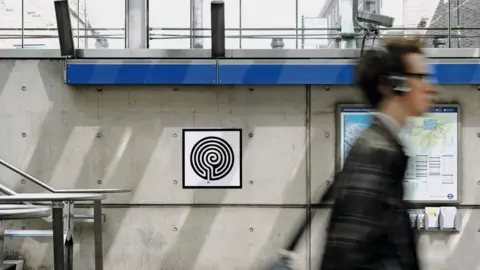 Thierry Bal
Thierry BalIn 2016, in response to the result of the EU referendum,10 artists made new artwork for sites across the Tube network.
The #LondonIsOpen campaign aimed to "send a message across London of openness, internationalism, diversity and commonality".
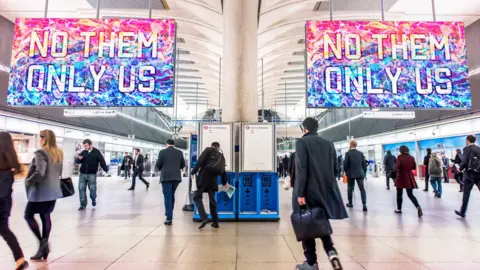 Benedict Johnson
Benedict JohnsonIn 2017 architectural collective Assemble with Matthew Raw worked on the first ever Art on the Underground remodelling of a derelict commercial unit.
More than 1,000 handmade tiles clad the renovated unit near the entrance at Seven Sisters station. The unit is now used as a coffee kiosk.
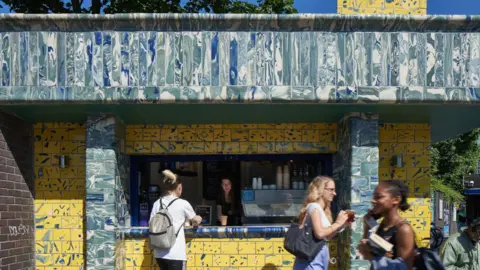 GG Archard
GG ArchardArt on the Underground's "most ambitious artwork commission to date" was displayed at Gloucester Road from June 2018 to June 2019.
Heather Philipson's creation, my name is lettie eggsyrub, was described as "a sculptural and video installation, using video game-style aesthetics to magnify eggs and avian body-parts".
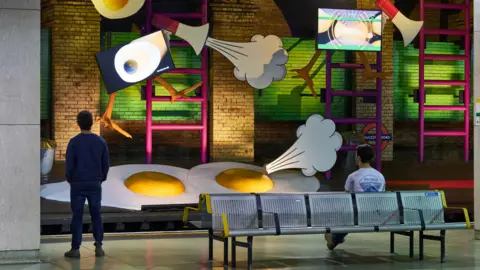 GG Archard
GG ArchardIn 2019 the British Ghanaian artist Larry Achiampong re-imagined London Underground's roundel at Westminster Underground station with a series of eight designs in the Pan-African colours, installed to replace every roundel at the station for three months.
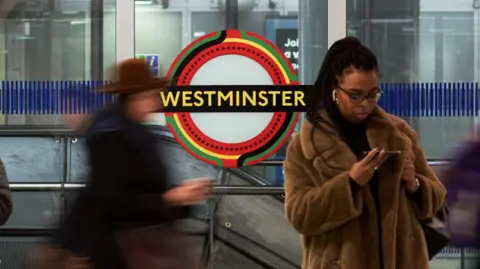 GG Archard
GG ArchardSudbury Town station, a listed building, was the venue for a 2020 Art on the Underground installation - two permanent hand-painted ceiling murals by Scottish artist Lucy McKenzie.
The work is entitled Pleasure's Inaccuracies.
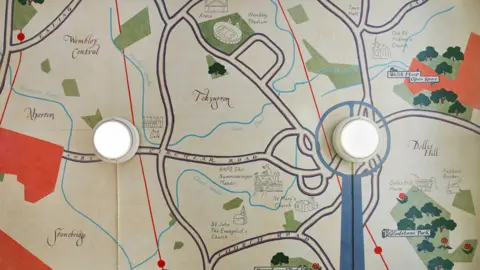 GG Archard
GG ArchardArt on the Underground's first kinetic sculpture, from artist Alexandre da Cunha at Battersea Power Station was unveiled in 2021.
Sunset, Sunrise, Sunset stretches across two friezes, 328ft (100m) and (197ft) 60m in length.
The permanent artwork "reflects on daily cycles, as the colours of sunsets and sunrises rotate through the ticket hall seemingly at random".
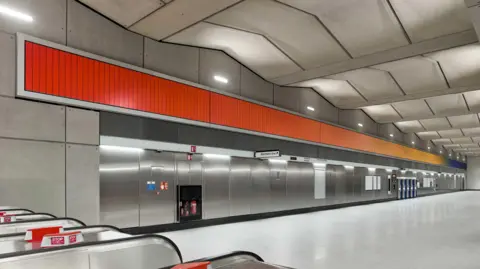 GG Archard
GG ArchardBrixton station has recently hosted a series of artworks that reflect the local area during the 1980s, with eight artists featured in one of Art on the Underground's most prominent sites.
Shanti Panchal's 2022 work, Endurance, centres the history of mural making in London.
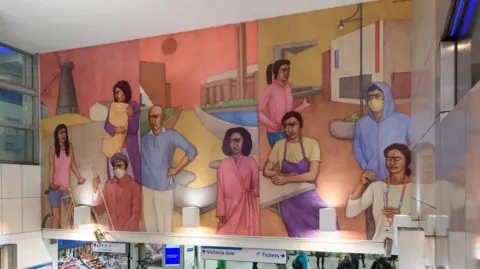 Angus Mill
Angus MillArt on the Underground's most recent commission features historic artworks from the 1920s, "a series of mosaic panels featuring two androgynous, angelic figures, whose ambivalent gazes fall over the commuters passing beneath them".
The work by Rosie Hastings and Hannah Quinlan, entitled Angels of History, was unveiled in St James's Park station in 2024.
 GG Archard
GG Archard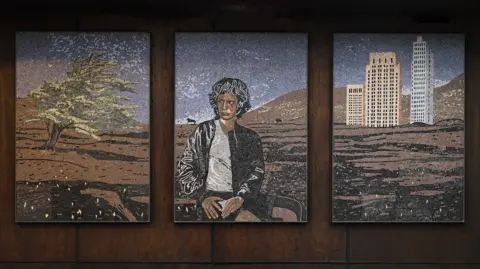 GG Archard
GG Archard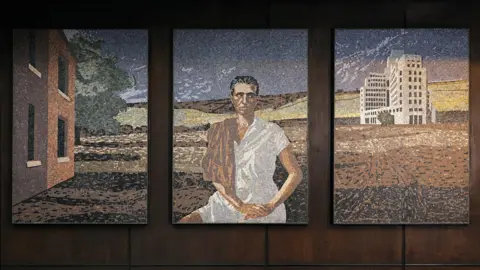 GG Archard
GG ArchardListen to the best of BBC Radio London on Sounds and follow BBC London on Facebook, X and Instagram. Send your story ideas to [email protected]
